Starting Resident Evil 4. Let’s do this.
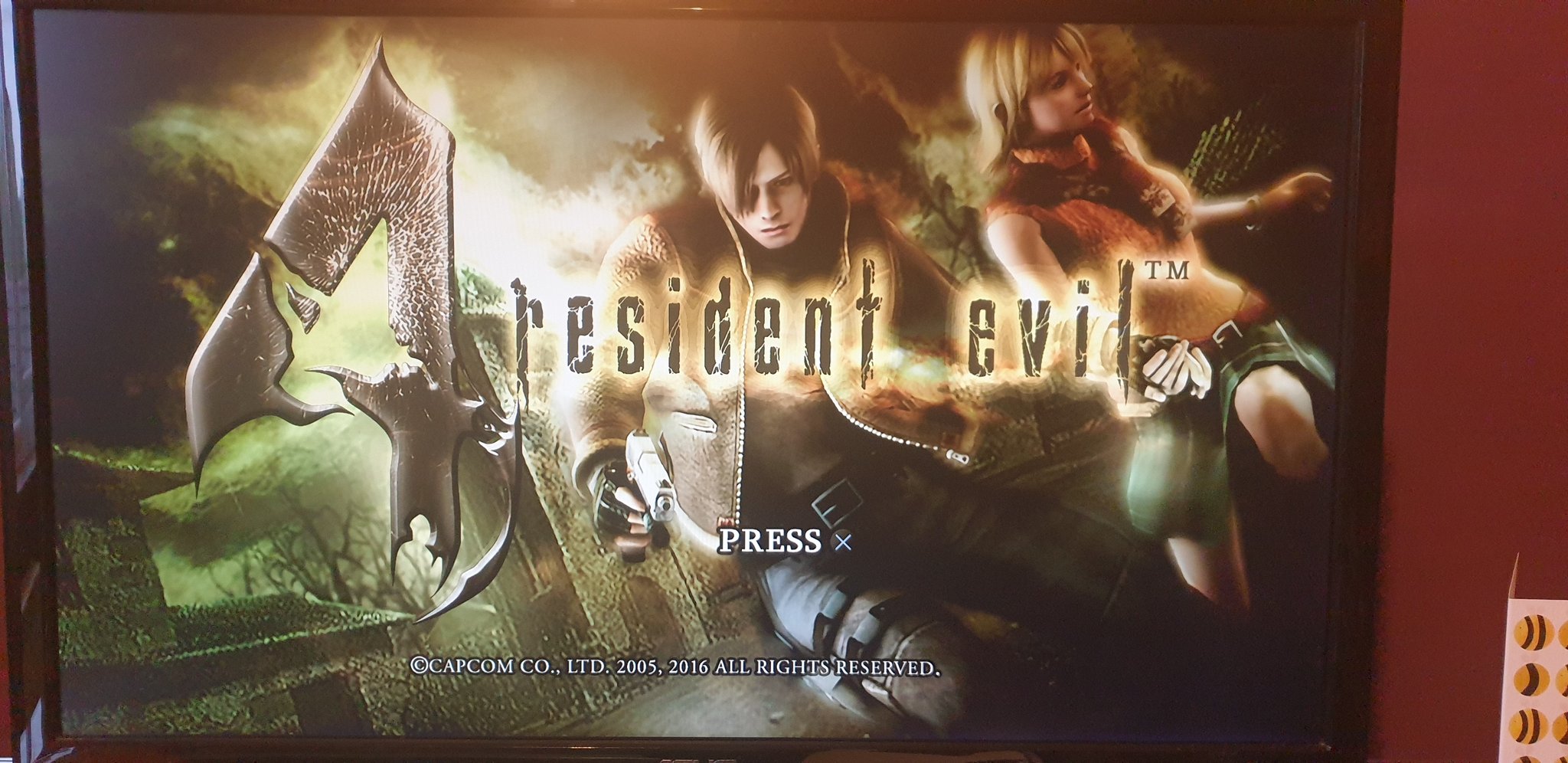
love a good story
I’ve never been much of a fan of The Killers. However, this song is an absolute banger. Loved it from the first listen.
My notes from Episode 2 of the British History Podcast.
Doggerland was the connecting area of land that connected britannia to the continent that, by around 6,500BCE, was completely underwater:

14,000BCE
12,000BCE
7,150BCE
6,500BCE
4,000BCE
2,500BCE
1,000BCE
700BCE
500-400BCE
325BCE
200BCE
100BCE
Starting to listen to the British History Podcast again. Planning to work all of the way through it this time.
I love the philosophy and energy behind the person presenting this show. 💚
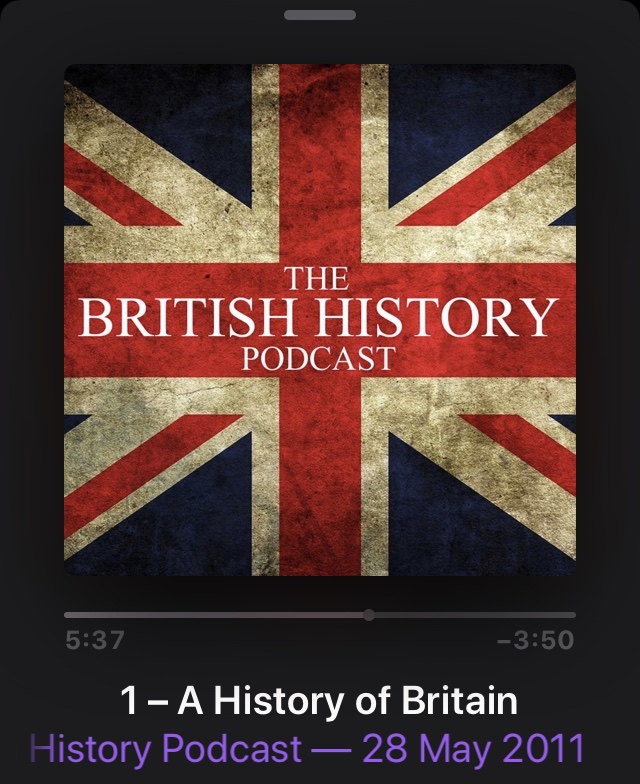
A young woman has a dream… to be dissected. Something inside her yearns to be cut open and studied…
At a local hospital a group of medical students are preparing to start their curriculum on the dissections of cadavers. As each of the student groups opens their body bag they find the old, frail bodies of the dead. People who have graciously donated their bodies to the advancement of medical science.
However, there is one group who conversely find a fresh-faced young woman. Fresh- faced enough that she could almost be mistaken as being alive. And then when she twitches a smile and opens her eyes, the students are stunned. They are greeted by a young woman who is begging to be dissected!
She soon runs out of the theatre laughing to herself. The students are left in shock. All except one, who is sure he recognises the woman from his past. This trainee doctor’s name is Tatsuro Kamata. But just how does Tatsuro know this woman? And where will she appear again?


Dissection Chan is, for me, one of the more disturbing stories by Junji Ito. It is also incredibly original and takes a common backstory of psychopaths and gives it an interesting spin.
When hearing those common backstories, especially in criminal investigation programmes, psychopaths often have a similar backstory. They would normally have been known to cut up small insects as children. They will often then graduate to rodents; then sometimes to cats or dogs; before becoming the vicious killer of humans that they are seemingly destined to be.
In Dissection Chan, the title character Ruriko Tamiya journeys along that same path. She begins cutting up frogs, with the aid of a helpless young Tatsuro — the trainee doctor from the story’s opening, and soon gets a hunger for larger animals. Before long she is chasing her friend with a scalpel, looking like she’s almost ready to become the killer she is seemingly growing into.
But what Ito does, very imaginatively, is take those psychopathic tendencies and turn them inwards. Ruriko becomes obsessed with wanting to be dissected herself.

Human’s are often described as having a tendency towards self destruction. Now, I am not a psychology student — my levels of psychology knowledge come from films and Derren Brown. Specifically I remember in Terminator 2: Arnold Schwarzenegger saying to John Connor, about human beings, that “It’s in your nature to destroy yourselves”.
I have also discovered this idea in other stories by Junji Ito. The one that springs immediately to mind is The Enigma of Amigara Fault. In it, people are drawn to the pitch black tunnels in an earthquake fault line carved out in perfect human silhouettes.
Just like the people that are drawn to their own holes in the wall, despite it meaning certain doom, so to is Ruriko drawn to her own doom. Being dissected, if not already dead, would definitely kill you, and she is very aware of this. But maybe the very same “Death Drive” exists in her, making the last few panels of this story inevitable.

The closing panel to Dissection Chan is one of my favourites of all of Ito’s stories I’ve read so far. The insides of Ruriko’s body are like something out of a living nightmare. It’s almost as if the souls of the things she’s dissected and killed over the years have become part of her.
It definitely explains the stomach pains she suffers from.
On a metaphorical level, it feels like it is the sickness inside her that is driving her obsession for dissecting. Something started long ago has being developing inside her. And by the looks of her insides, it is not only driving her to her actions and desires, but it is something she has been feeding too.
It is almost as if her desires in her early days have made way for a biological need to be dissected as of late — in order to let out of her body the rotting, mixed-up living things that have developed inside her.
Well, this is where you come to be dissected, right? I want to be dissected!
Ruriko Tamiya has a very particular taste
Ruriko’s life and her physical body are definitely the result of a very grotesque vicious cycle.
And then there is the sexual deviancy side to it all.
Not only is this woman obsessed with dissection, but in her later years she becomes sexually attracted to it. Soliciting men and begging them to cut her open; then appearing at Tatsuro’s home, as naked as she was on that hospital table, screaming her mantra: “Dissect me!”.
Junji Ito isn’t one to shy away from such sexual scenarios. I remember another character of his from Wooden Spirit, who was depicted as being sexually attracted to the old historical home in the story. Crazy stuff.
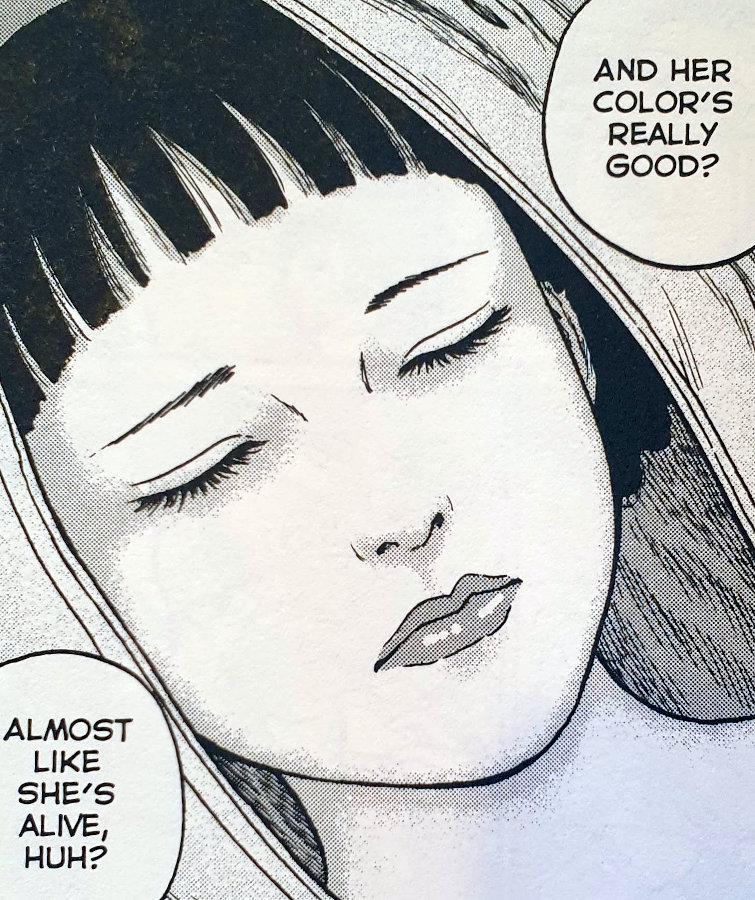
Dissection Chan is incredible. It touches nerves that you possibly don’t know you have. It may even make you question what is possible in the realm of horror and horror manga.
The depictions throughout the story get disturbing at times, but nothing so disturbing that would put you off any of Ito’s other works.
In fact, I would argue that this story is one of the best examples of an Ito horror manga to give you an appetiser for his other stories. It is definitely one of the first I read in the Fragments of Horror collection, and is one I often re-read as well.
In The Storm, the question as to whether the spiral is actually targeting Kirie is pretty much answered. She is pursued by the eye of a deadly storm…

Didn’t you hear the wind last night? The voice of the storm was calling your name!
Kirie is the target of the spiral that haunts Kurouzu Cho, as it seemingly controls a violent typhoon to hit the town hard. As her close friend Shuichi and Her sit on the beach together, Shuichi gets the feeling of the approaching typhoon before the weather forecasters soon confirm it.
Before long the typhoon tears through the town, destroying homes and the streets surrounding them. Kirie does attempt to still take some food to Shuichi that evening but it looks that she is put off by the storm’s power — coupled with the fact that it seems to call out her name on the wind.
All through the night the storm seems to be calling out to Kirie, which confirmed a long-standing theory of mine: the spiral curse is targeting Kirie for some strange reason. As she makes her way to Shuichi’s the next day, He finds her walking halfway there — to his horror.
He warns her that the eye of the storm, the typhoon’s central point, is directly overhead and is watching her! What follows is a violent chase through the streets of Kurouzu Cho as they attempt to escape the storm’s focused eye.


Something about Dragonfly pond wasn’t right ever since those first chapters where it would pull in and absorb the cremation smoke from recent funerals. And now it makes its reappearance as it seems to be the very thing that pulled the typhoon into the town.
Rather than the typhoon and storm being controlled by the spiral curse, it is more likely that something inside Dragonfly Pond is capable of pulling in surrounding things to its centre.
Throughout recent chapters of the Uzumaki Collection, the power that the spiral curse has being displaying has been increasing somewhat. The gross transformations in The Snail; The violent, bloody events at the hospital and the resulting babies born in The Umbilical Cord. The stakes are getting higher and the surrounding people that are being affecting is increasing too.
And at the centre of it all seems to be Dragonfly Pond.

Kirie is front and centre the target of the typhoon, and by extension the spiral curse itself. But this is nothing unusual. She has always been around many of the strange occurrences in the town. This may even have led some to think she was a cause of them. However, this chapter seems to make clear that the spiral is actually targeting her.
Could it be that all of the things that happened before were in fact ways that the spiral was trying to get close to her? The parents of Shuichi right back at the start; her father’s furnace in The Firing Effect; her admirer in Jack in the Box; even the boy who transformed into The Snail in her classroom.
Part of my own theory about Kirie is to do with the location of her family home. She lives with her family right next to Dragonfly Pond — the place where a few of the occurrences of the spiral have happened. There was the cremation smoke in The Spiral Obsession part 2 being sucked into it; the pottery made from the pond’s clay in The Firing Effect; and now the storm being drawn into the centre of the pond.
It just feels like too much of a coincidence for her to live next to this pond and then go on to be targeted by the spiral.

Junji Ito’s art is always something to marvel at. His detail and imagination go hand in hand in creating some of the most awe-inspiring and disturbing visions from the world of Horror Manga.
With The Storm specifically, I wanted to draw special attention to the amount of detail he puts into the chaos in the story. Half of the story is Kirie and Shuichi being chased by the storm across Kurouzu cho, as it tears open beings and local districts. The town really is starting to fall victim to this curse’s power on a much wider scale now.
In many of the panels in this chapter you really can see the time and effort put into every frame. Into creating the believable, frantic journey that these two friends must endure. You can feel the biting storm; the unforgiving wind; and the utmost sense of urgency as they try to escape the eye of the storm.

The Storm gives a solid answer to something I had been thinking up till this point in the collection. That Kirie is in fact the target of the Uzumaki; that it seems to have some kind of designs on her.
When viewed in isolation the events of this collection, although very strange, don’t seem to be targeting her as such. But when I was looking back after reading The Storm, the pieces seemed to start spiralling into place.
I probably wouldn’t recommend reading this chapter alone, without knowing the surrounding story that is happening. Although it does stand on its own and shows Ito’s incredible skill, you should definitely read this as part of the collection as a whole. I think it deserves to be understood in it’s wider context.
A teaser trailer for the upcoming Uzumaki 4-part anime on Adult Swim. I am now officially excited!
I’ve not really seen or heard much on the new 4-part Uzumaki anime series coming on Adult Swim next year. However, after seeing this teaser and I am now officially excited!
It seems to look like they have actually taken panels from the manga and animated them, as opposed to re-imagining them. And the effect looks incredible in my opinion.
Kirie looks gorgeous and the section showing her looking up at the face in the cremation smoke creates a stunning effect (no spoilers on who’s face it is :P)
I’m really looking forward to this series but I do hope that each episode is around an hour long at least. 4 parts seems way too little to fit the entirety of the Uzumaki Collection in to. And surely they can’t be taking any chapters out of it?
Ghosts of Prime Time introduces us to one of the strangest double acts I’ve ever seen. This double act is a comedy duo, two young women, known together as Tasogare Kintoki.

…but we’re makin’ things happen with our comedy. We’ll take control one o’ these days!!
Tasogare Kintoki says some strange things during their comedy routine
Keisuke and Tsuguo are two friends talking in a small cafe. Tsuguo is an every day regular young man, whereas Keisuke is more withdrawn and “gloomy”.
Tsuguo tells his friend of a story of a recent local killing of an obscure comedian. The comedian was found in the street with an expression of equal parts suffering and laughter.
Later that day, the two friends go to a local comedy club – Tsuguo wanting to cheer Keisuke up – to see the comedy lineup. One of these acts in the line up is the aforementioned duo Tasogare Kintoki.
Tasogare Kintoki are objectively bad at comedy. Their jokes fall flat and most of their banter is regarding how they will one day “make it big” and live in a mansion. A very strange double act indeed.
However, after a few moments of complete silence with the odd whisper, one audience member begins laughing uncontrollably. And then, just as Tsuguo comments on this strange occurrence, another person does the same. The effect starts to repeat through the audience until the entire club is in a vicious roar of laughter. That is, everybody except for Keisuke.
There is no doubt that something is not right in that comedy club, but what is it? Keisuke is the only one not affected, but what does he have that the others don’t? And what might Tasogare Kintoki do when they realise that there is one person seemingly immune to their unique brand of comedy? Their sinister grins promise a future of pain and torment.

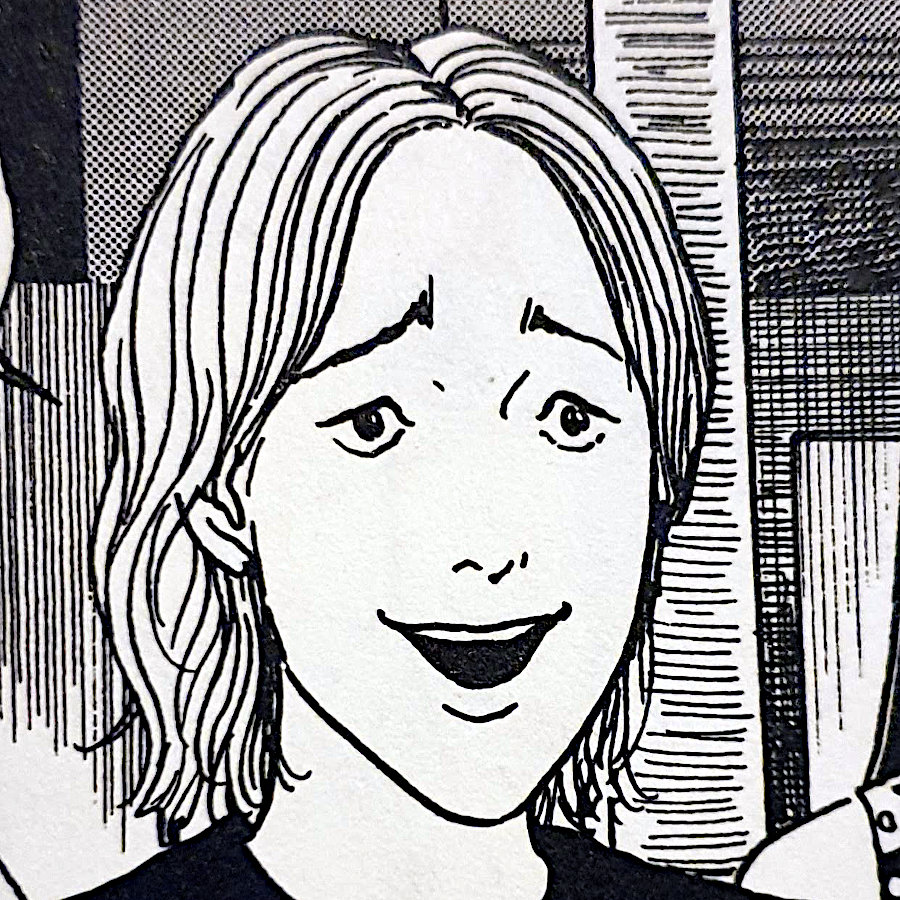
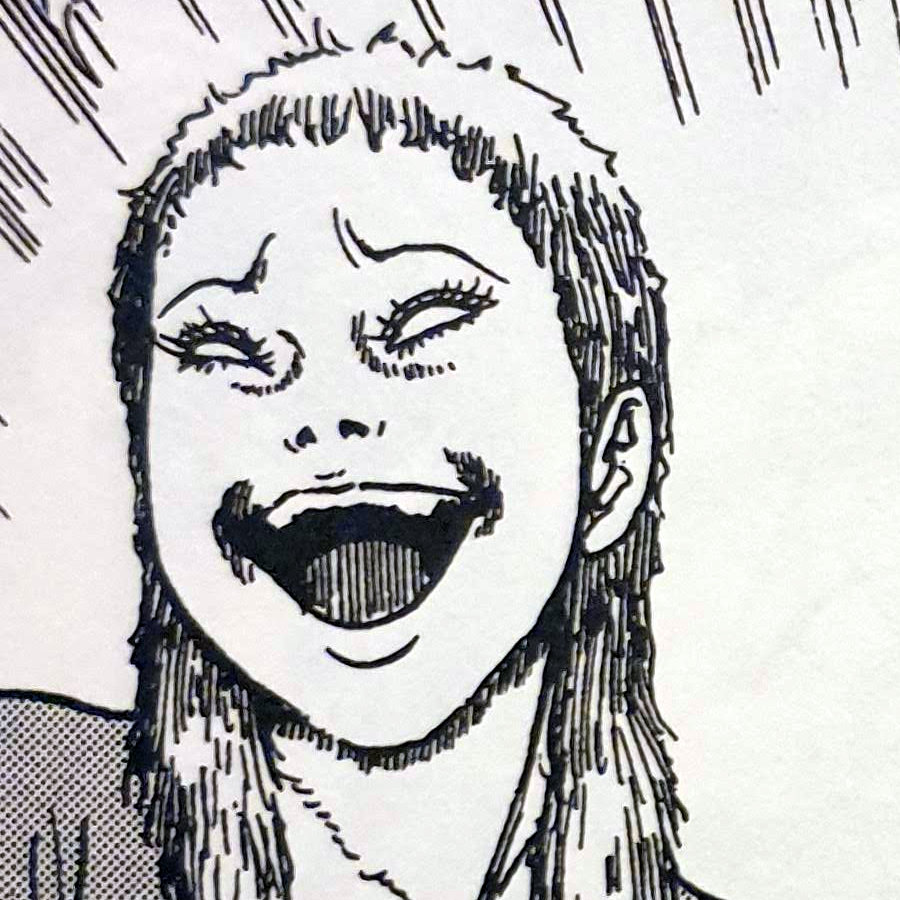
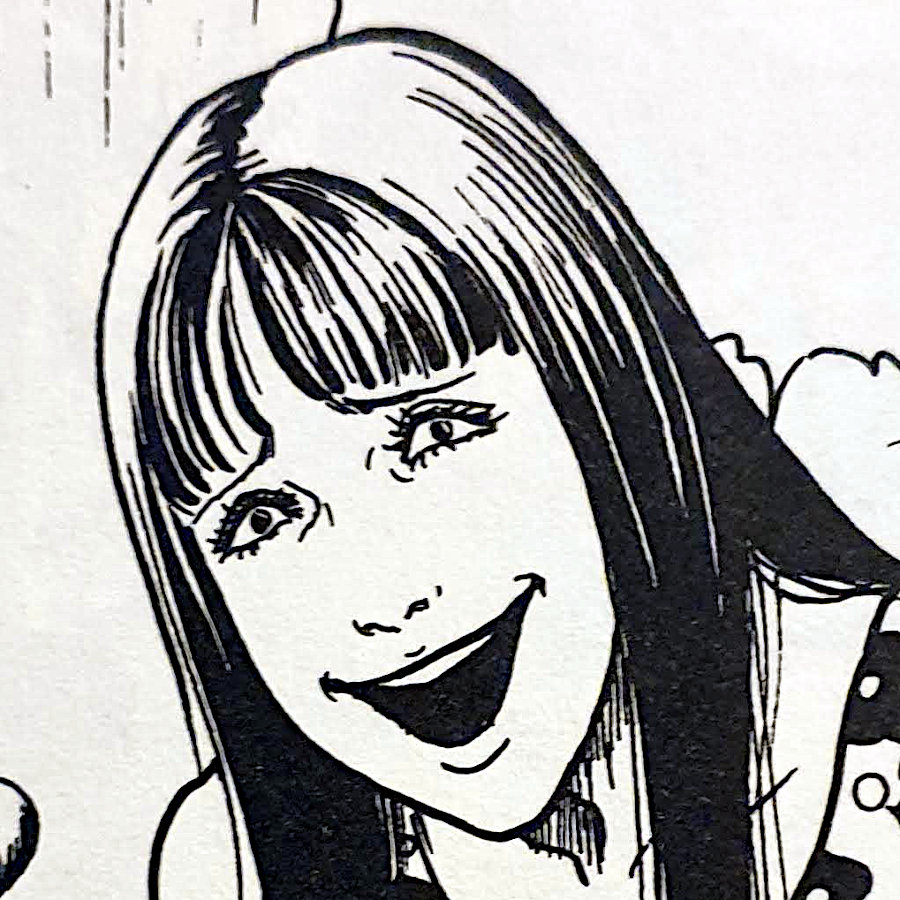
Some spoilers below
Horror and Comedy are very closely related. Both genres have a willingness to go over the top with absurdity and exaggeration. While comedy uses it’s exaggerations to poke fun and make its audiences laugh, horror conversely uses it’s own to scare and unsettle its audience.
But what’s often more interesting, at least to me, is when an artist manages to combine the two into something often greater than the sum of the parts. Many people often cite Quentin Tarantino’s famous ear-cutting scene in his first major film, Reservoir Dogs. (Despite never actually seeing the cutting itself, audience members still tending to look away)
What I think Junji Ito has managed to craft here though, is a different way of blending horror and comedy. Instead of taking the elements of both genres to make his story a “horror comedy”, he has actually taken horror and made it infect the comedy inside the story. I am referring to the fact that the laughter and enjoyment apparently felt by Tasogare Kintoki’s audience, is in fact the direct result of the phantoms/ghosts that they project out into the crowd.
I think the blending of genres is always interesting to see. But I especially liked here how Junji Ito hasn’t necessarily blending the genres together. He has instead kept this as a horror story, but used the comedy within the narrative as the vehicle for that horror.
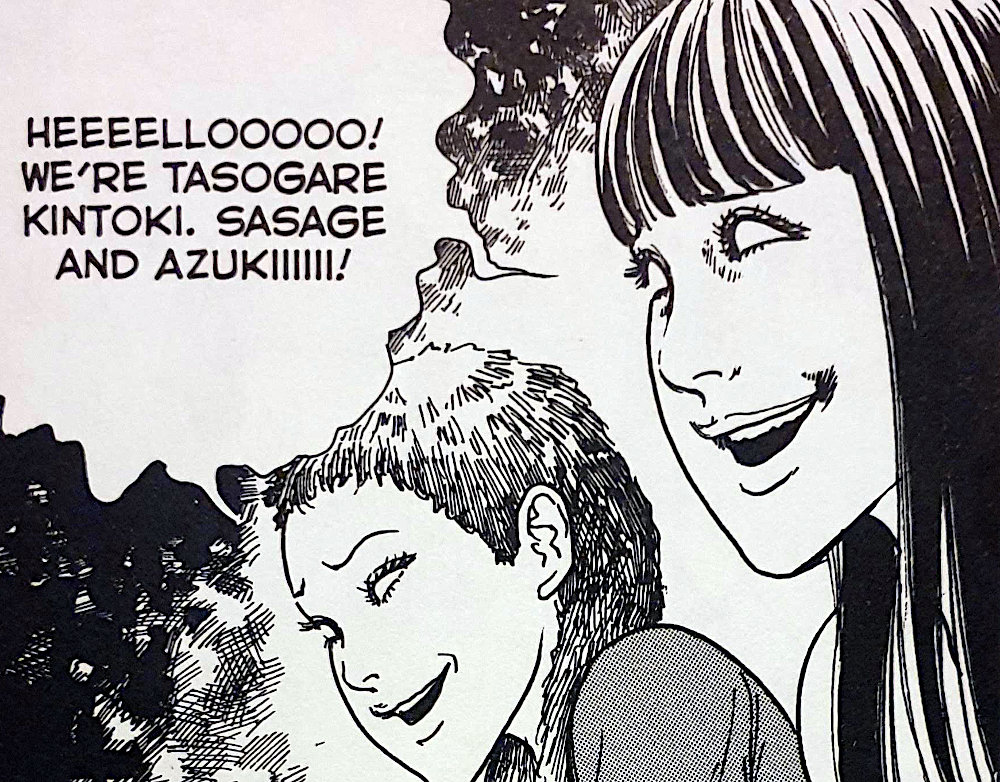
Junji Ito has always been an artist who draws great facial expressions. Especially faces of pain and obsession. In Ghosts of Prime Time, he has on display some brilliant faces of extreme laughter and, of course, pain.
The first example is actually on the very first page — the story of the obscure comedian who is found dead in the street. The close up of his face does indeed show laughter at the time of death. But so to it manages to put across pain and suffering from, I believe, the completely white eyes and taught muscles around the neck and face.
And I can’t mention the faces in this story without mentioning Tasogare Kintoki themselves. Their expressions always that of faces on the cusp of laughter, sometimes without pupils in their eyes. Almost like they are being possessed at times. And despite their smiles, they are always projecting a sinister intent towards all those who see them.
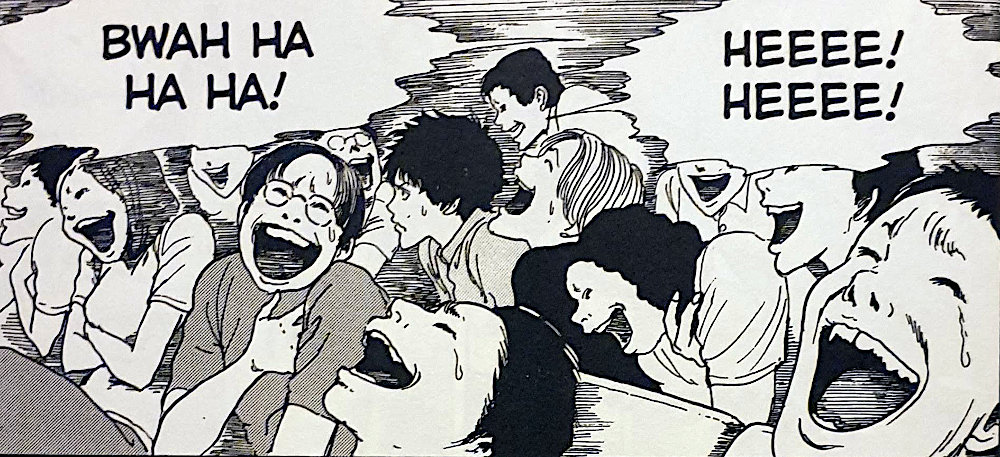
Keisuke definitely takes on the role as the sane compass centre in Ghosts of Prime Time. He reminds me a little of Shuichi in the Uzumaki collection. Whilst all the craziness is going on around him, he seems to stay grounded and be able to look objectively at those things.
Just as Shuichi seems to be able to detect and know of the spiral’s control within his town, so to does Keisuke in his town. He can see the spirits that leave the bodies of Tasogare Kintoki to tickle the audience into submission. He knows they are not to be trusted and warns his friend of that.
I think these sorts of grounded characters are important to these stories. Without them we would just see the events unfold with no-one really to fight back. But Keisuke does fight back — and with gusto.

I really love Ghosts of Prime Time. It doesn’t seem to be as well known or regarded as Junji Ito’s more popular stories like Tomie or The Bully, for example. But I want to change that! This story is, as are most of Ito’s works, wholly unique.
I believe this one would be a perfect first story of Ito’s to read if you were looking to get into his stuff. Especially if you wanted to avoid the kinds of body horror that come with so many of his more celebrated works.
And believe me when I say that it will become a journey for you. Because once you have read this story, you will most likely want to start exploring his other great works too.
Hellstar Remina is getting an official VIZ Media release! And the cover is absolutely gorgeous
U.K. Release Date: 7th January 2021.
Pre-order on amazon today by clicking here.
Hellstar Remina is getting an official VIZ Media release! I can’t explain how excited I am for this. I have read it previously online but will be so happy to be able to pay for an official copy and actually give back to Junji Ito for this insanely addictive story!
I wrote up my thoughts on Hellstar Remina a while back too.
The cover art is absolutely beautiful too!
